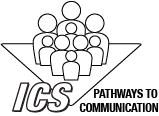
Carolyn’s Story
The beginning of my pathway to “The Three A’s of Communication”.
Soon after my daughter was born, I took a course by Gordon Training International. This It was Thomas Gordon’s Parent Effectiveness Training. Gordon felt that parents should be able to apply the concepts of psychologist Carl Rogers, as he did, and listen to their children, as he did. That course turned out to be a pivotal and transforming experience for me.
I learned the power of listening for feelings, as well as content, and even learned to feel the feelings.
As I raised two daughters, it was a skill that enabled me to avoid a lot of parent-child battles.
I addressed my new role, as parent, as one would prepare for a new career and supplemented my learning from Thomas Gordon’s writings by reading a host of other books. Some that influenced me were multiple works based on Alfred Adler’s psychology by Rudolf Dreikurs and Don Dinkmeyer, How to Talk So Children with Listen and How to Listen So Children Will Talk, by Adele Faber and Elaine Mazlish, Raising Your Child Not by Force But By Love, by Sidney Craig, an early writing by Marshall Rosenberg, and various books by Haim Ginott. I even read works by James Dobson to understand contrasting approaches.
I was eager to share what I was learning, so I began teaching workshops and classes.
This included a 30-hour, 10-week course based on a combination of my learnings. When parents completed the course and told me that they needed follow-up, I began a newsletter. It was a wonderful way for me to share the things I was continuing to learn and how I applied my findings with my family. In time, the newsletter took on a life of its own for 15 years with subscribers all over the English-speaking world, leading me to travel with my workshops.
Parents returned to class with wonderful stories of how the communication skills we discussed “worked.”
They found their lives transformed, as I had. Then one of the fathers told me that it “worked” in his office, and soon I was invited to teach a variation of my course for workplaces and organizations – small businesses, large corporations, school boards, and church retreats.
The power of the course was reaffirmed for me during a class at Nabisco when a room full of manufacturing supervisors were debating the effectiveness of the skills I was teaching. One man said, “Look, I just tell them what they need to do, and I tell them again. That’s what supervisors do.” One of his classmates, said, “And is it working?” To which the first man replied, “No, but it did when I was coming up.” Whereupon the second man returned, “That’s why you have to listen to her. The old way doesn’t work anymore!”
I was interested in what “worked.”
I was also interested in how close we could come in expressing “unconditional love” when building relationships.
Eager to expand my knowledge of communication, and to add to my understanding of organizational communication, I completed the PhD program at The State University of New York at Buffalo.
Armed with the PhD degree, I found myself on a new career track.
This one was in academia – sometimes providing training in communication, more often simply using the communication skills I’d learned. While Associate Dean for Professional Development at the University of Denver’s Daniels School of Business, I had the privilege of offering a three-month program entitled Emerging Leaders, based on The Leadership Challenge by James Kouzes and Barry Posner. Many of their “rules” for leaders, such as “model the way”, “encourage the heart,” and “enable others to act” echoed what I’d been teaching in my communication courses. I became certified in the Myer-Briggs Inventory, which we used in the Emerging Leaders program. It is a wonderful tool to help colleagues understand each other.
During my years in academia, whenever a personnel issue arose, I was given the assignment to find out what was behind the problematic behavior and how to move forward. It was recognized that I had knowledge and skills in communication – with particular emphasis on the skill of listening. I was also invited to facilitate discussions on touchy subjects.
A new direction opened up for me when a former colleague moved to a new position as editor at the American Animal Hospital Association.
She asked me to create a series of communication cases for their Trends magazine.
My husband, John Meyer, also a PhD in communication, has a flare for dramatic presentation, so we became partners in developing the communication cases and workshops.
Our writing and training focuses on helping others build relationships through the power of effective communication. It is our belief and experience that effective interpersonal communication is at the root of satisfying relationships – in the family, the workplace or community, and we have the expertise to help.
Our training appeals to learners because we ground it in realistic cases and examples – and even add the flare of drama to make it fun.
Although all of us have communicated since the day we were born, our courses help people to see their blind spots and make better choices.
We are known most for our basic course: Three A’s To Effective Relationships: Accept, Assert and Accommodate.
The “Accept” module unpacks the complex skill of listening and how listeners can reinforce their speaker. The “Assert” module recognizes the importance of speaking up and speaking out – with information or concerns and how to do so without being condescending or threatening. The “Accommodate” module teaches the skills learners need when there are conflicting needs or when a mutually satisfying path forward is the objective.
The basic course we have created is followed by or adapted to specific needs.
In the family, it may be “Talking About Money” or “Talking About Sex.” In the office, it is “Conflicting Agendas,” “Communication that Impacts the Culture,” or “How Power Communicates.” In the veterinary profession, it is “Calling Clients for Return Visits,” “Talking About Costs,” or “Discussing End-of-Life Decisions.” Whether we’re talking about family life, workplace satisfaction, civic dialogue or world peace, our passion is with the basic art and skill of communication. A list of some of the topics we address can be found on the Training page.
For over a decade, since we began writing communication cases for the American Animal Hospital Association, much of our attention has been on communication within the veterinarian and pet-care industries.
The application has helped professionals improve their relationships with their clients and with each other, leading to increased client return and compliance and improved workplace efficiency and well-being.
What we are doing is a lot bigger than building profits – communicating effectively with customers and finding that they come back for more. And it’s a lot bigger than having happy employees – with improved employee retention rates.
We’re talking about how to listen to people in your lives – caring about them, focusing on them and being sure you hear where they are coming from.
It’s about speaking up when you have something to say – either information others need or a concern you have, which leads to learning how to own your problem, to speak for yourself, to be provocative, to be responsible – in a non-blaming and shaming way. It’s about turning conflict into learning and working toward win-win.
I’ve known people whose weight has gotten away from them until their health was at risk. They finally spent the money and time to get help and begin life on a more healthy path. They have never regretted the time and money spent.
Likewise, those who were willing to be uncomfortable in order to change directions and who have taken the time to focus on what beliefs, concepts and skills they need to communicate effectively have been able to measure the results. They have seen their relationships improve; they have developed increased confidence in their ability to present themselves; and even their employment opportunities have multiplied.
